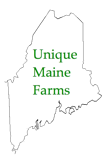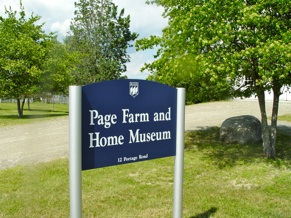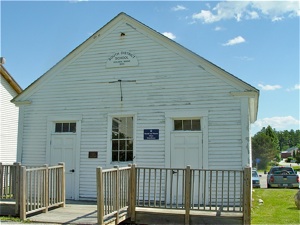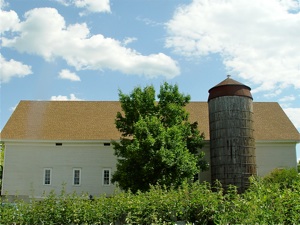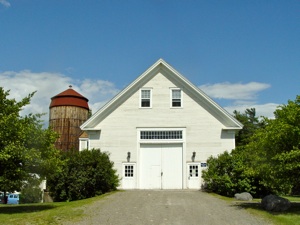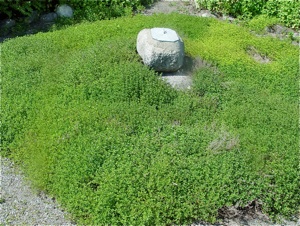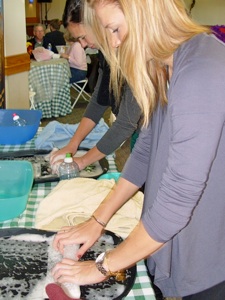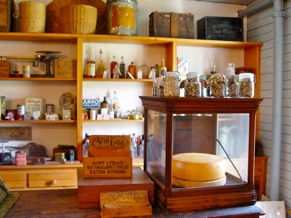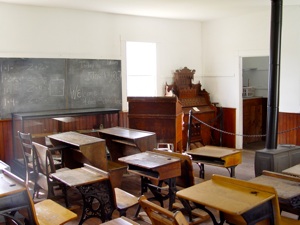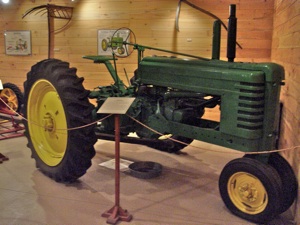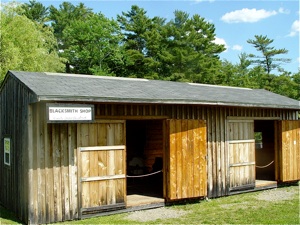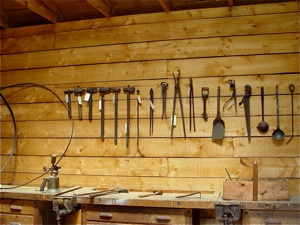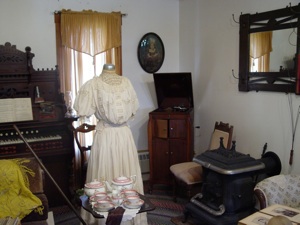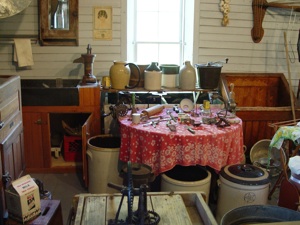Name: Page Farm and Home Museum
Address: Page Farm and Home Museum
University of Maine
5787 Museum Barn
Portage Road
Orono, Maine 04469-5787
Phone: 207-581-4100
Email: pagefarm@umit.maine.edu
Website: www.umaine.edu/pagefarm/
Hours:
Tuesday-Saturday 9 a.m. - 4 p.m.
Closed Sundays, Mondays, Holidays
Facebook:
Page Farm & Home Museum Facebook Page
Products and Services:
-Self-guided museum tours
-Gallery tours & field trips by appointment
-White Barn Museum exhibits
-Harold and Marion Chute Schoolhouse
-The Blacksmith Shop
-Winston E. Pullen Carriage Shop
-Herb Gardens
-Oral History Project
-Gift Shop
What Makes Page Farm and Home Museum
Unique?
Since the University of Maine was founded in 1865 as the “Maine College of Agriculture and Mechanic Arts” it seems most appropriate that
an agricultural museum would be situated on the University of Maine at Orono campus. The mission of the Page Farm and Home Museum is
to “collect, document, preserve, interpret, and disseminate knowledge of Maine history relating to farms and farm communities between 1865 and 1940, providing an educational and cultural experience for the public and a resource for researchers of this period.”
The 1833 White Farm barn, Blacksmith Shop, Harold and Marion Chute Schoolhouse, Winston E. Pullen Carriage Shop, and the herb gardens all combine to make a very impressive museum complex in the middle of the state university setting. The public is invited to tour the Page Farm and Home Museum when it is open on Tuesdays through Saturdays from 9 a.m. through 4 p.m. There is no admission fee but donations are most welcome.
The Page Farm and Home Museum was dedicated in 1992, in memory of Edwin D. Page, a farmer, and his wife Vesta L. (Cleveland) Page, who was a homemaker. They had settled in North Hermon in 1898 and raised registered Jersey cattle and O.I.C. hogs. They also grew apples and crops. The names of their children were listed on the dedication plaque at the entrance of the barn: Bertha Hodgdon; Ethel McAvery-Elliott; Amy Hannaford; Myra page; Edith Damon; Charlie Page; Zelma Hodgdon; Nina Hohnson-Hamm; Jeanette Andrews; Henry Page; Leon Page; Rodney Page; and Roswell Page.
Educational outreach has been an important part of the Page Farm and Home Museum. They welcome groups for Gallery tours and field trips with advanced reservations. They organize special events such as wreath-making workshops. At he Bangor Harvest Festival in 2012, they set up many exhibits related to the fiber arts and encouraged visitors to try their hands at felting wool. They have participated in the Common Ground Country Fair for twenty years.
There are three floors of educational exhibits to enjoy in the White Farm Barn. In the lower basement, farm equipment such as an ox cart, gristmill. and equipment for field crops and feed sacks are on display. On the main floor, there is the reception area. the Farnsworth General Store, and exhibits of various rooms, such as a kitchen, bedroom, and parlor that are laid out with items found many years ago. There are also exhibits focusing on animal husbandry, poultry, 4-H, Cooperative Extension, and the Orono Historical Society. The photos taken by C. Stewart Doty of the challenging times faced by the residents the St. John River Valley during the Depression leave quite an impact.
On the second floor of the White Farm Barn, visitors can enjoy exhibits dealing with Early American decoration, maple sugaring, dairy farming, woodcarving, winter fun, ice harvesting, shoe repair, and spinning and weaving. A realistic recreation of an old Grange room is quite impressive with the mannequins and extensive collection of Grange artifacts.
The nineteenth-century blacksmith shop that is situated at the Museum was originally located in Southwest Harbor. It was donated by Charles and Alice Smith. Visitors to the blacksmith shop learn about the importance of the blacksmith. He was the tradesman who knew how to create and fix the tools that were needed to run the farm. In the blacksmith shop at the Page Farm and Home Museum, visitors have the opportunity to view an extensive collection of tools, the foot-operated grindstone, the standing portable forge, the anvil, dousing barrel, and hand-operated blower.
In the Winston E. Pullen Carriage Shop, there is a collection of farm equipment including antique tractors, carts, wagons, and plows. The
Harold and Marion Chute Schoolhouse is located next to the Carriage Shop. It was originally the one-room Holden South District School House that was used in Holden, Maine, from about 1855 until 1955. It contains the old wooden school desks, chalkboard, and the primers used long ago to teach children of all different grades.
Behind the picnic area at the Page Farm and Home Museum are the herb gardens. They were designed in 1995, by Tom Gasaway and June Sendrowski. The gardens were based on a formal layout that was popular in the early 1900’s. Ms. Sendrowski not only chose and planted the various herbs, but she also incorporated many lovely additions to the gardens such as fences, stones, arbors, and old farm implements. The roof garden on one of the small buildings with all the live plants is quite a sight to behold!
One of the attractions at the Page Farm and Home Museum is the Farnsworth General Store. With the beautiful antique display cases, oak shelving units, old-fashioned metal signage, and antiquated phone system and post office, it seems easy to step back in time when things were slower-paced and much more community-based. The general store at the Museum also functions as a gift shop with an assortment of reproduction toys and items that have been crafted by local artisans.
Perhaps one of the most meaningful projects taken on by the Page Farm and Home Museum is their Oral History project. The Museum staff and volunteers have recorded the memories of over forty different individuals who either grew up on or worked on Maine farms before World War II. The Maine Humanities Council has helped to fund the transcriptions of the interviews.
It is suggested that individuals interested in visiting the Page Farm and Home Museum,
check out their website for information about volunteering and special events. A group of fiber enthusiasts including spinners, quilters, knitters, and hand workers meet at the Museum every Friday afternoon from noon to 2 p.m. and on the fourth Saturday of each month from 11 a.m. to 3 p.m. Special events are planned during the year. A celebration of St. Distaff’s Day took place this past January and there was the Great Fall Potato Sale in November and the Ye Old Holiday Shoppe craft fair this past December.
Almost 150 years have gone by since the University of Maine was originally established as “The Maine College of Agriculture and Mechanical Arts” in 1865. How exciting it is to observe that agriculture is still valued and celebrated at the school thanks to its many farm-related programs and the work of the Page Farm and Home Museum.


